Rouady Central
The Rouady Family Website
Kerbals in Space
New Horizon and New Beginning
Mission 19: Minmus Missions Begin
Mission 18: First Space Telescope
Mission 17: Kerbals in Space and First Muns
Mission 16: A New Era
Starting Mun Missions
Bite-Sized Education Drives My Interactive Journey
It turned out to be one of those moments in your life that significantly alters its trajectory.
My first experience with 3D animation was in New York City. In the early 1990s there was a technology conference that I attended mainly out of curiosity. I had started using computers in the late 70s as a pre-teen (the classic TRS-80) so they were primarily a hobby and sometimes a tool. I had not really considered them a career; I was busy working in production of independent films. I used the early Internet (telnet, ftp, e-mail) but the web was still a few years in the future.
I met someone who was using a Silicon Graphics computer and Wavefront software to create 3D animated videos. I watched as he explained how the tool worked and how the structures were created but then I saw the result; near realistic scenes, objects and characters that could move! This was amazing and not well known yet (Toy Story would not arrive until 1995). My career path of film and video was colliding with my passionate hobby of computers, graphics and gaming and it got my mind racing.
3D Animation lets you take the audience to places, spaces and times that they could never visit in the real world
The educational power of this was obvious to me. Not cartoons, but photo-realistic experiences that really let the person watching immerse themselves and generate deeper levels of understanding. As the years have gone on, I have added new technologies to the mix; interactive functions, real-time rendering, video integration, online streaming, even virtual reality and the new platforms that range from the big TV in the living room to the phone you carry on the subway. They all became platforms for creating educational experiences.
I needed to show this in action, so I set out to do my first project. Being a film production worker in Indie's has never been a very lucrative experience so I did not have the financial ability to spend $50k plus on the setup I had seen, so I looked for alternatives. The young Internet provided them.
A consumer program called VistaPro, two shareware 3D renderers (the scenes were described in text files) called PolyRay and POVRay, and a hardware board from a company called DPS provided the foundation for creating my own 3D studio for a couple thousand dollars.
My first project was entitled Guided Tour: The Red Planet (1992) and it was a 9-minute piece that took the viewer to Mars by using the various tools to create surface renderings of the planet based on topographic data from the NASA probes.
There was no narration however there was original music. It told a simple story of the journey to Mars, arrival at the space station (after a psychedelic 'warp') and then visits to three different areas; the largest canyon (Valles Marineris), the highest peak/volcano (Olympus Mons) and a general valley. It concluded with a future experience of watching the surface become terraformed for human colonization.
As with any work that is 25 years old (and some of your earliest efforts), it is easy to look back on it and see the million things that you would do differently, the primitive "realistic" renderings and the many mistakes you made (like psychedelic sequences or getting the height values wrong). However, it is important to recognize that this entire video was created an a computer less powerful than a cheap cell phone today and using shareware software tools A good network connection was a 56k modem!
Here are a few screenshots from the video. If you are interested in seeing the full 9-minute piece it is available here on Vimeo.
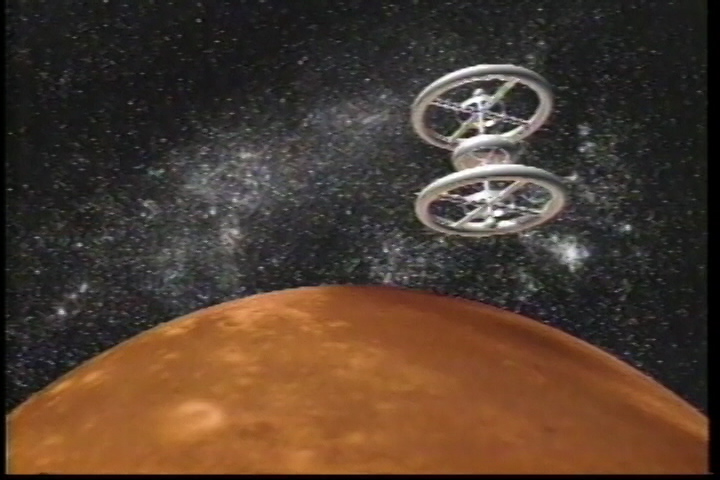
Scene of arrival at the space station in Guided Tour: The Red Planet.
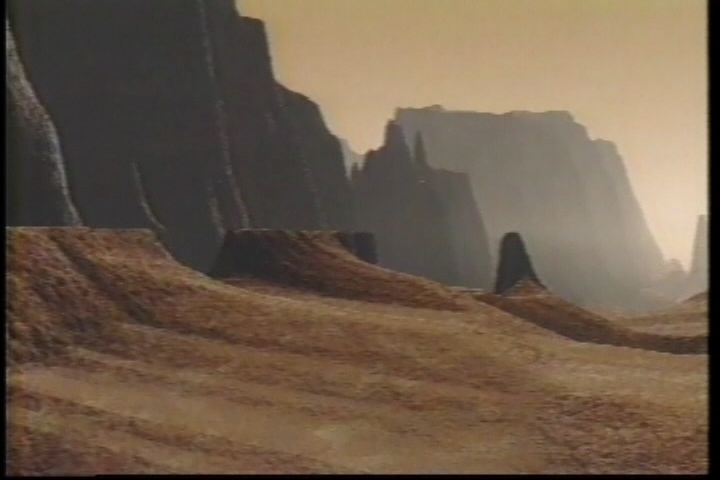
Travelling through Valles Marineris in the Guided Tour video.
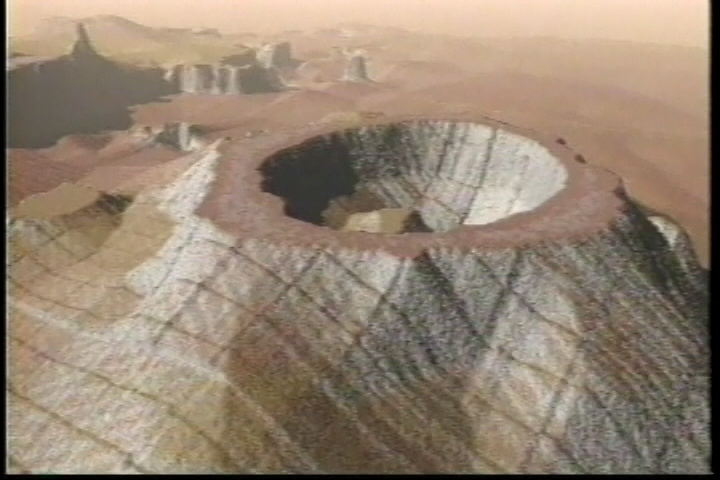
High altitude view of Olympus Mons on the Red Planet.
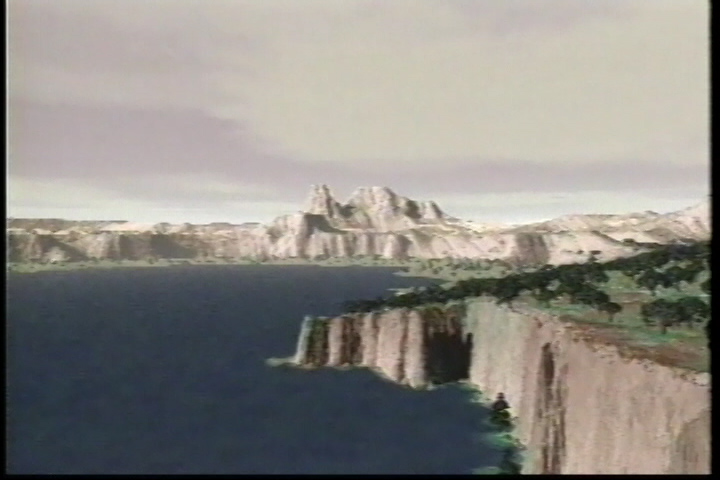
Shot of the terraforming sequence at the end of the Mars video.
After completing the video, I decided to go forward into starting a 3D animation company which was called Eyeball Productions. I invested in additional 3D software (3D Studio) and added computers to function as a rendering farm. My passion remained with the educational-oriented materials but the business needed to focus on commercial revenues so work was done for advertising, label and album design and forensic recreations in addition to paid film elements.
However, I still saw great value in the learning aspects of 3D and a new technology was evolving in Multimedia CDs which allowed the video watching experience to be enhanced with interactivity. So, as part of the effort to branch into this new arena, I developed an edutainment concept for an interactive CD called Uniquest.
Working with noted astronomy writer Bob Berman, we developed a game concept where our player experienced a lab accident in a holographic lab/studio and was thrust into a virtual universe from its inception. By understanding and learning how the universe works, they would be able to escape back to their reality and win the game.
While we were not able to ultimately get the project funded, I did create a video walkthough of the early stage of the game which highlighted some pioneering ideas like using 3D as a gaming platform and a first person perspective. Following are some screenshots from that promotional video. The full 3-minute piece can be seen here on Vimeo.
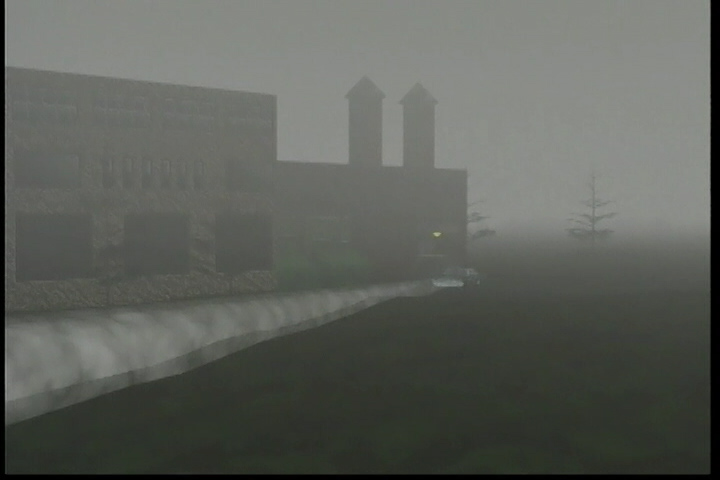
Opening scene where the player arrives at the lab where the adventure takes place.
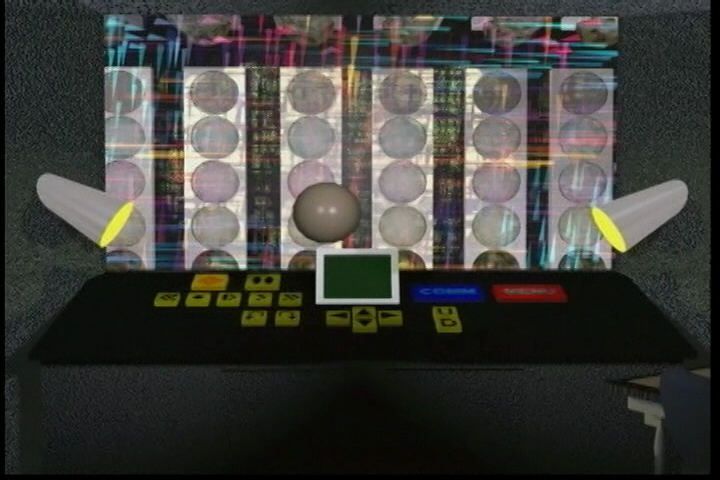
Inside the hololab where the player (represented by the sphere/head) corrects for the visible holographic static.
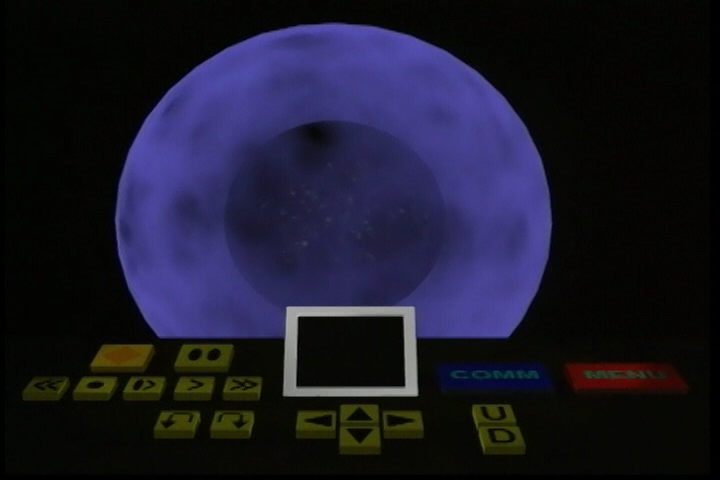
After starting the program, the player witnesses the big bang itself.
My company and this project led to my introduction to Mike McCue (currently CEO of Flipboard) who was leading a company called Paper Software. They were developing yet another new technology called VRML. This made real-time 3D rendering possible and thus added more interactive capabilities to these experiences.
I created a number of demonstrations and small applications for Paper that ultimately helped the company be acquired by Netscape Communications in 1995. While there were a large variety of projects in many genres, I still was able to do some that were more educational and informational in nature. One in particular, Weather World, was recognized by Mark Pesce in his book VRML Flying Through the Web as "one of the finest examples of three-dimensional interface design that's been done." He did spell my last name wrong though!
Weather World showed the position of the various weather satellites and by selecting one you were presented with the latest image from that satellite (usually no more than 15 minutes old during the day). Here is a scan of the color plate in the book:
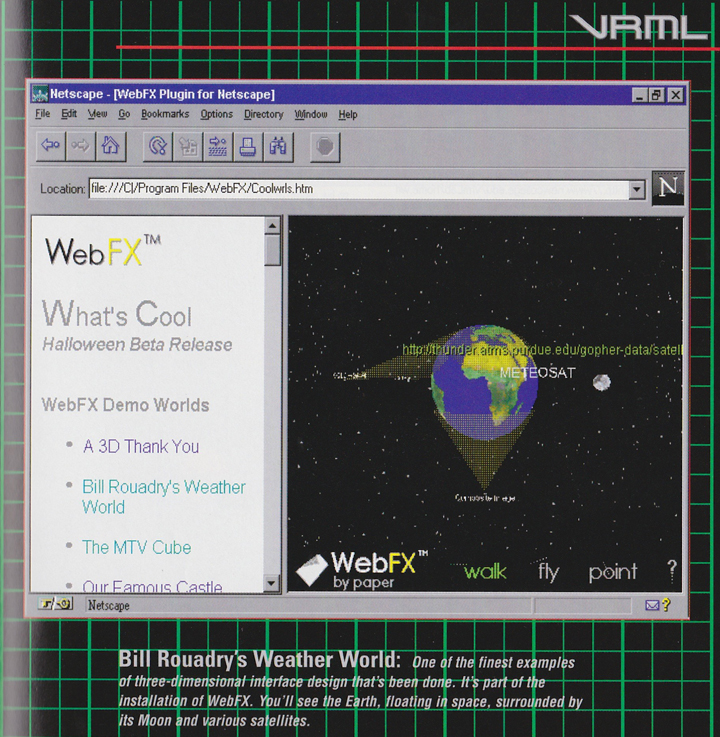
The color plate from the book VRML Flying Through the Web which highlighted the Weather World application.
I was asked to join the Paper team when they went to Netscape and lead a team developing applications for the VRML plugin. Many fell into the category of edutainment including Music World where the user could explore different music from around the world using the globe as an interface.
As the web market became more competitive, Netscape decided to partner with Silicon Graphics (SGI) to develop future versions of the VRML browser so I ended up moving to SGI to continue my work there. Yes, I was now part of the company that had started my 3D journey a few years earlier!
My time there was short-lived (only 3 months) due to the increasing business challenges of the web. The Cosmo Software division (which developed the VRML plugin) was cut. However, during my time, I met Rob Myers, another 3D pioneer, who would soon become part of a research division at Sony to develop a platform for bringing these experiences to TV.
Rob asked me to come on-board and I became part of the Blendo team at Sony's US Research Lab for the next 8 years. In the interim, I had worked as a consultant and built an interactive 3D application that was used at medical conferences to demonstrate how certain drugs interacted with cells in the body for the cell point-of-view. However, the opportunity to develop these experiences on TVs (using the Playstation as a platform) was too good an opportunity to pass up.
The name Blendo came from visually blending video and real-time 3D rendering to implement a concept developed by Rob called "Steerable Media." The idea was that you start with the linear programming that is natural for TV and make the interactive experience an optional enhancement for the viewer.
Many very interesting projects were developed and, as usual and with Rob's support, I was able to do a number edutainment examples as part of the work. The research project was ended in 2005 due to financial challenges at Sony, but not before I was able to create some of the examples shown here:
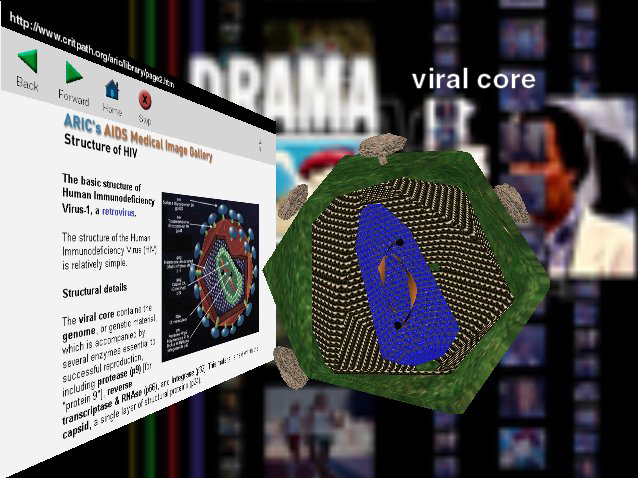
An interactive experience that visualized the AIDS virus, its structure, and showed the challenges of defeating the illness.
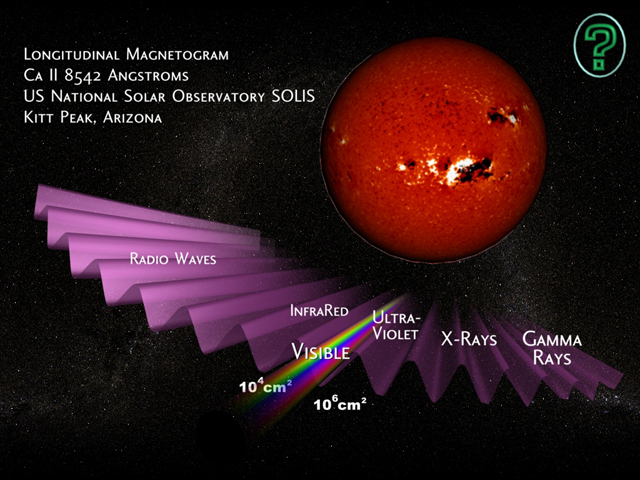
A simple application where the user could move their perspective along the electromagnetic spectrum and showed our Sun in that wavelength.

An interactive 2D timeline where the user could learn about major events of the 20th century and their relationship to each other.
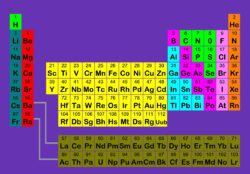
A periodic table where the user could zoom in on elements and see their structure visualized as well as learn more information about the element.
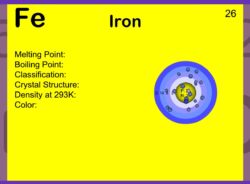
Close up view of an element (incomplete).
Near the end of my Sony tenure, I was contacted by a former Sony partner named Roland Yamamoto who was directing a documentary for PBS and was looking for some animations to complement the story. Roland has worked with me on a number of projects and knew about my film background, so he asked if I could help.
I thought it would be fun to do some traditional animation work again and in addition, it was the kind of educational visualizations that I enjoyed doing. Here is a screenshot from the work. As an additional note, the final film First Light received a Telly Award recognizing the work.
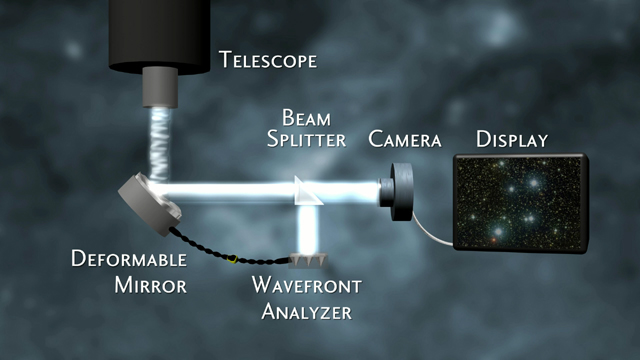
Screenshot of an animated visualization of how adaptive optics works in telescopes.
After Sony I joined Hillcrest Labs which was a company that brought yet another new technology to the package. Hillcrest developed Freespace, an in-air pointing remote control that was designed for the new Smart TVs and streaming platforms. Once again, I was able to develop experiences that used this new capability and its corresponding software platform across a variety of subjects.
As part of that, I developed a number of projects that continued my work in education and information. There was a new twist that I was able to exploit as well. The maturing of the web had brought with it a huge array of information that was being made available from sources like the Library of Congress and museums like the Holocaust Museum in Washington. Much of this information was out there but was being presented in a way that did not make it easily accessible or found. Part of my effort was to make this available in a more entertainment way on TVs and mobile devices so that people would be able to discover it and learn.
The result was a series of TV interactive applications, a selection is presented here. The captions explain the details of each.
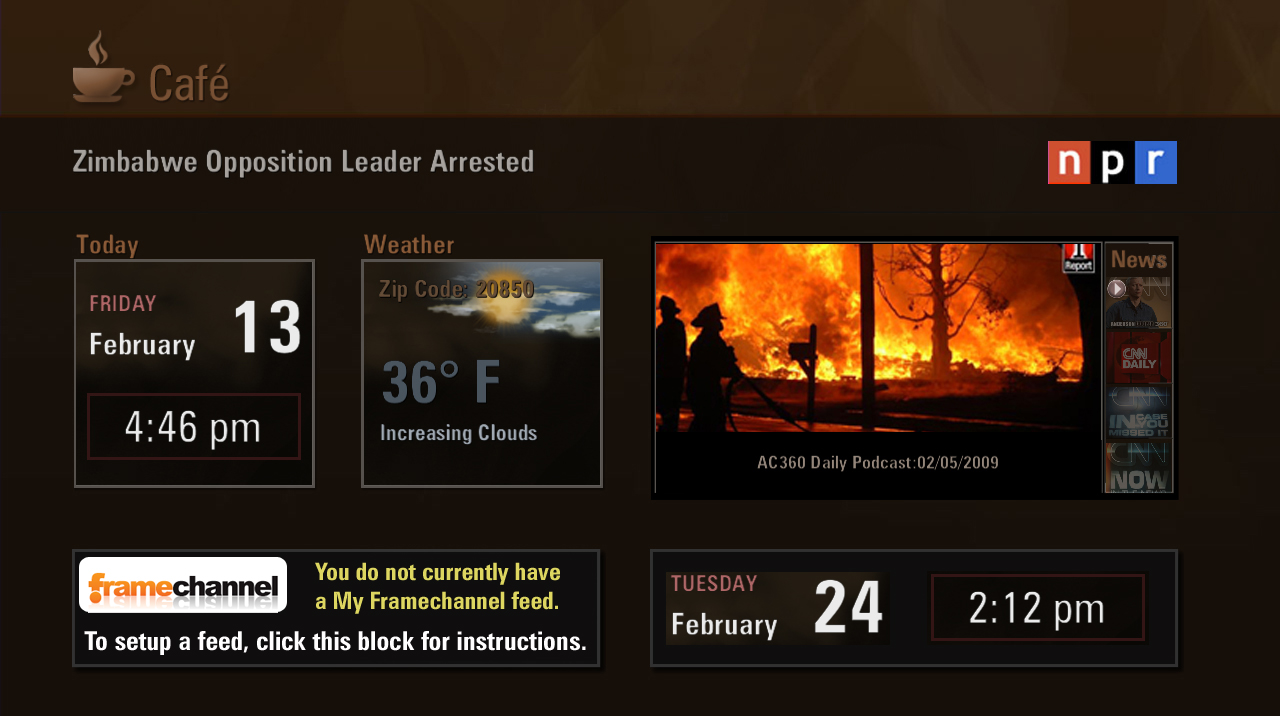
Cafe was a daily information display that provided the latest headlines, traffic, interesting information tidbits and videos all in a single unified interface. It was included as a core application in the Kodak HD Theater product that was created by Hillcrest for Kodak.
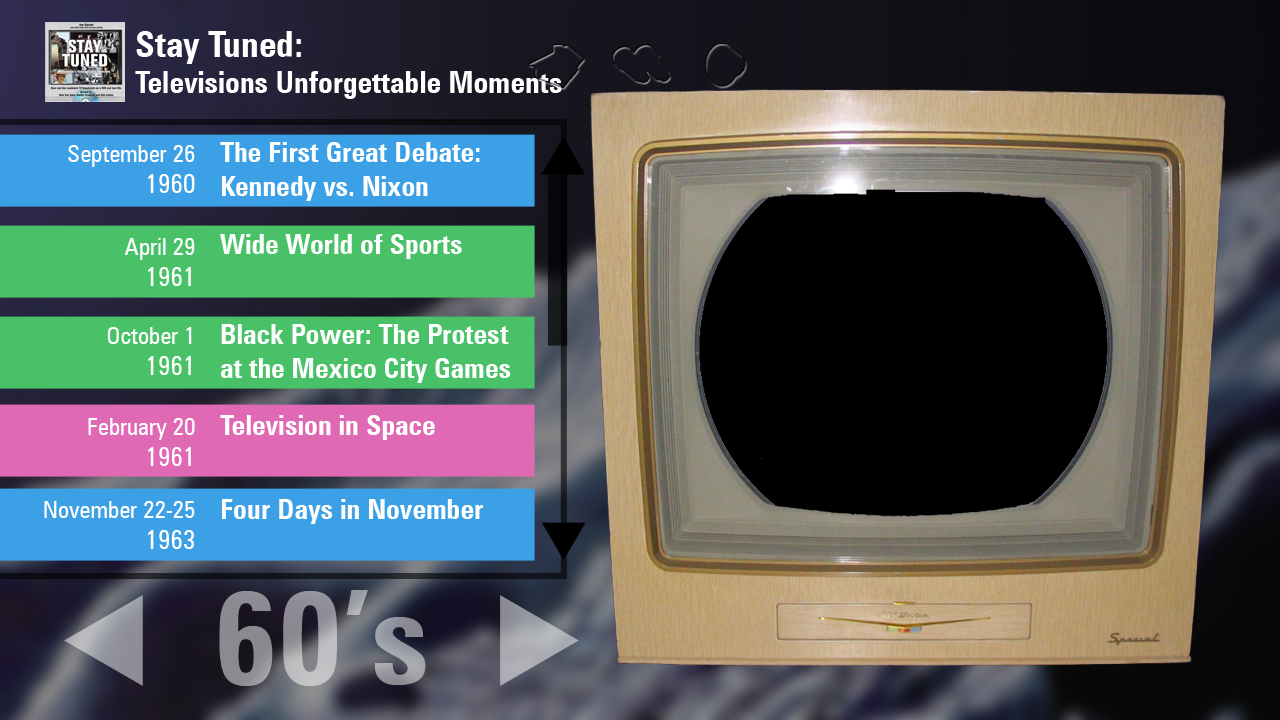
Stay Tuned provided a casual exploration of the history of television. A variation of a timeline, notable shows were grouped by decade and the user is able to watch the clips embedded on a TV styled in that period. Part of creating an immersive experience was the theming around each decade.
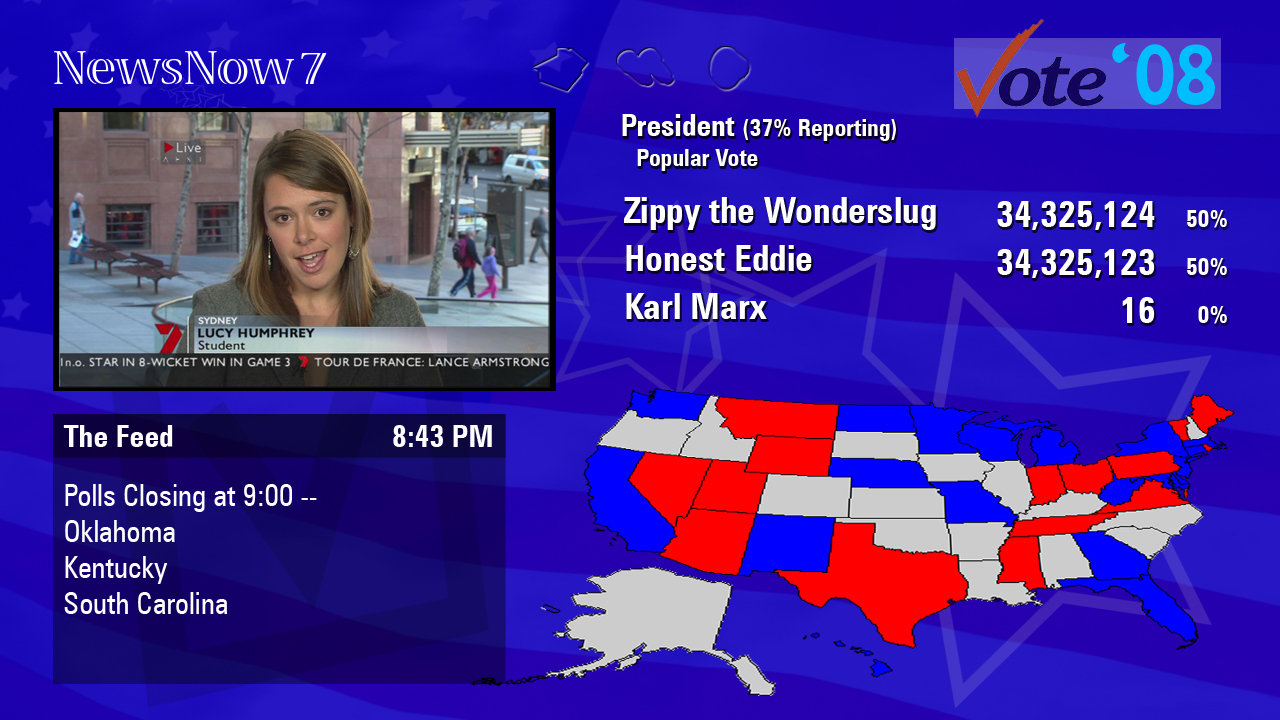
More information than education, the interactive election display allowed the viewer to explore topics while watching the results on election night; this included personalized results for the region the user is in or specific contests of interest.
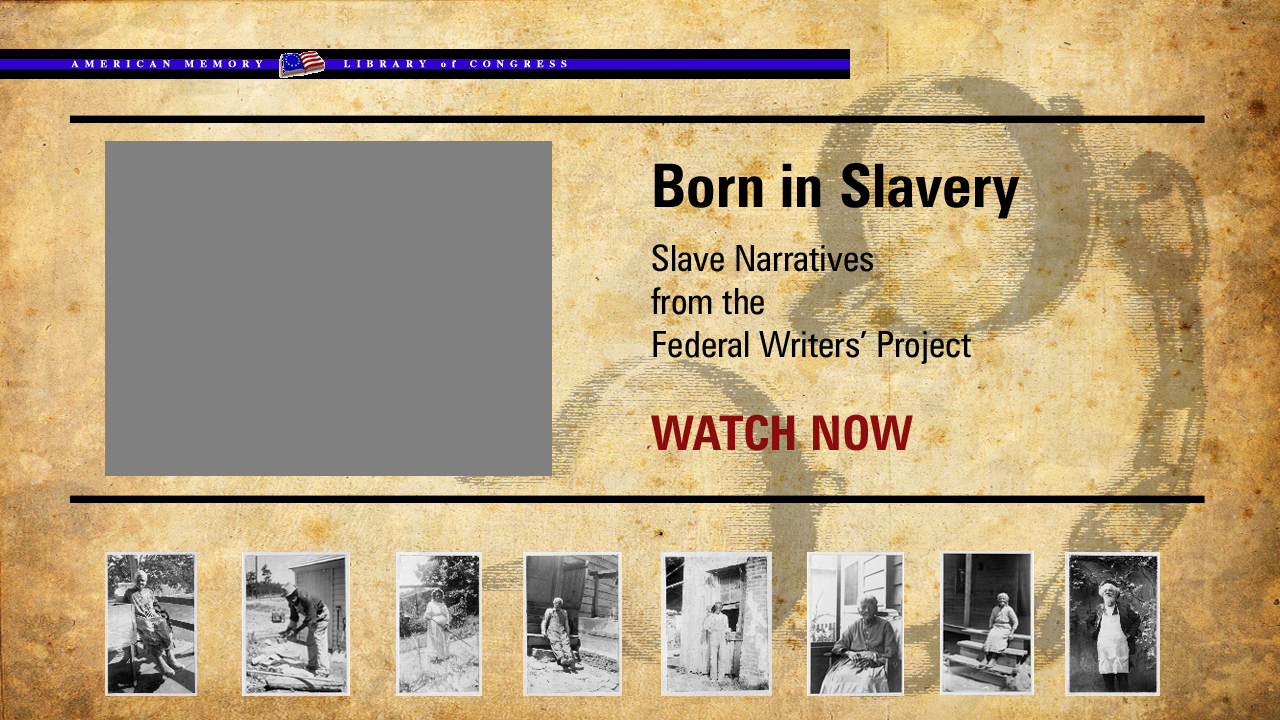
Using the Library of Congress collection of interviews with former slaves, this interactive exploration used re-enacted voice-overs and images from the collection to tell individual slave stories captured by a special federal project in the early 20th century.
My work at Hillcrest ended as the company shifted focus towards the motion technology and away from the production of interfaces, however, the power of random access selection using the pointer remote enabled these engaging experiences to have more options than traditional remote controls on a TV.
As we now are entering a new era where virtual reality is becoming mainstream, I have begun exploring options in that space. But the new technologies are not a requirement for a well-told story with compelling content. Creating learning experiences that are both fun and informative will continue to drive my passion as I continue to bring projects such as these to fruition.